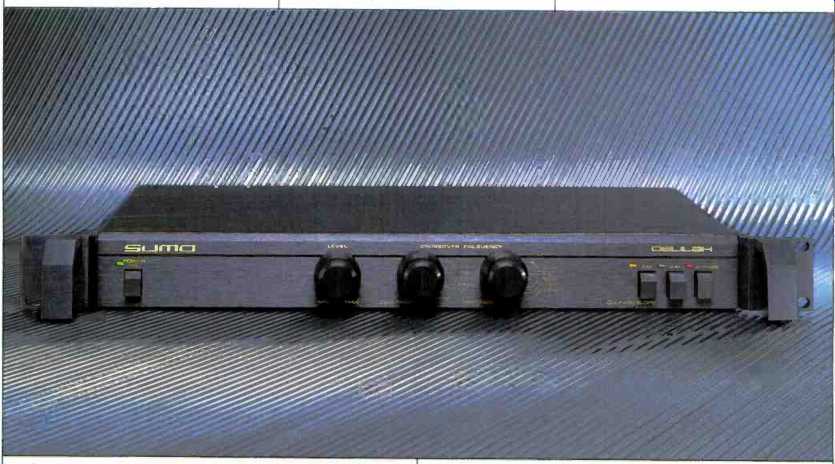
Manufacturer's Specifications:
Crossover Frequencies: 50, 63, 80, 100, and 125 Hz.
High-Pass Filter Slope: 12 dB/octave.
Low-Pass Filter Slopes: 12 or 18 dB/octave.
Hum and Noise: -95 dB.
Total Harmonic Distortion: Less than 0.007%.
IM Distortion: Less than 0.007%.
Dimensions: 19 in. W x 1 3/4 in. H x 8 3/4 in. D (48.3 cm x 4.5 cm x 22.2 cm).
Weight: 12 lbs. (5.5 kg).
Price: $499.
Company Address: 21300 Superior St., Chatsworth, Cal. 91311.
The Sumo Delilah crossover offers substantial flexibility in its outputs and crossover frequencies. In addition to the expected high-frequency stereo outputs, it has low-frequency outputs that include both same-polarity and reversed -polarity stereo pairs. Being able to make polarity changes at the crossover is a worthwhile advantage. Otherwise, such changes would have to be made at the loudspeaker or amplifier output and could be much less convenient. The low-frequency outputs can also be used for feeding a stereo subwoofer, with two stereo amplifiers operating together in bridged mode for higher power output. Sumo makes a strong pitch for the desirability of having plenty of power for the two bottom octaves.
With most stereo amplifiers, bridging is possible by feeding the "+" and " -" outputs of the crossover to the left and right inputs of the amplifier. The "hot" terminals of the amplifier's left and right outputs are then used to drive the subwoofer. In this way, both channels of the amplifier contribute to the subwoofer drive. (Some stereo amplifiers will not work well with this hookup. Check with your amplifier's manufacturer to make sure there are no potential problems.) The connections for a mono subwoofer also include both normal- and reversed-polarity jacks. This makes it easy to reverse a mono subwoofer's polarity at the crossover-if such a change is needed-and to drive a stereo amplifier in bridged mode for greater power output.
The low- and high-pass sections can be set individually to 50, 63, 80, 100, or 125 Hz. The high-pass section has a 12 dB/octave slope. The low-pass section has a gain control, and its slope can be set for 12 or 18 dB/octave.
Control Layout
The Delilah crossover is just 1 3/4 inches high but, with its solid rack ears and handles, conveys a sense of ruggedness immediately. The mounting-hole spacing and standard EIA height make for easy and exact placement in all 19-inch racks. The weight is hefty enough, however, that the rear of the unit should be supported in any portable installations.
The "Power On" switch, at the left end of the front panel, clearly shows by its position (in or out) whether the unit is on, as does its green LED, which is easily seen at a distance. In the center of the panel, from left to right, are the low-pass "Level" control and the " Low Pass" and " High Pass" crossover frequency rotary switches. Each has a large round knob which makes for easy turning (although the switch knobs might benefit from some knurling). The "Level" control has "Min" and "Max" labels at the extremes of rotation, but an indication of the 0-dB gain point would be much more useful. The crossover frequencies (50, 63, 80, 100, and 125 Hz) are the same for both low pass and high pass.
The range and the third-octave spacing of these frequencies are good, as they allow matching the great majority of subwoofers. The detents for these two switches are excellent, but setting them and the level control to particular positions would be aided by indices more obvious than grooves in the black knobs. At the right end are three pushbutton switches. The first two are interlocked and are for "Low Pass Slope," "18 dB," and "12 dB." Each has a yellow LED to show which has been selected. The third switch is for on/off "Bypass"; bypass is indicated by a red LED. All control labels are gold and, on the black panel, are relatively easy to see with medium-level room lighting.
The gold-plated input/output jacks on the back panel have easy-to-read white labels on a black background.
From left to right are stereo pairs of jacks for "input," "H.F. Out," "L.F. Out" (two pairs, one "+" and one "-"), as well as the single "+" and "-" jacks for "Mono Out." Removing the top and side cover revealed a close-to-full -chassis p.c. board of the highest grade. The layout of the high-quality components was very neat, and each was labeled. There were many discrete transistors and just five ICs soldered in place. (And what soldering could be seen was excellent.) The power supply was mounted separately from the board and covered by a close-fitting shield. The toroidal transformer could just be seen from the front-panel end. After long use, the power supply cover was barely warm. There may have been a fuse under the shield, but I did not remove it to check.
Crossovers and Sound Fields
I suspect that most audiophiles who have two- or three-way loudspeakers never give much thought to the crossovers included in their speaker systems. Most of us prefer to believe that the manufacturer did whatever was necessary to make things come out right. Subwoofers are available with and without built-in amplifiers and with and without lowpass filters. The accessory crossover provides both low -and high-pass sections to control what goes to the subwoofer (keeping out the high frequencies) and what goes to the main speaker (keeping out the lowest frequencies). One design approach is to make the subwoofer responsive to bass transients so that, in the crossover region, the bass pressure wave adds in phase to the pressure wave from the main speaker. A second approach considers the subwoofer output to be non-directional because of the long bass wavelengths; thus, the addition of sound within the listening room from the subwoofer and the main speaker will be on an acoustical power basis. For the first approach, the subwoofer can be relatively compact, which permits positioning in the same plane as the main speakers. Power addition is the goal with the second approach, where sub -woofers can be quite large, usually requiring floor placement. Such units may offer high power and more extended bass response than the typical, shelf-mountable, fast-response subwoofers.
With the fast-response subwoofer, addition of the pressure waves would be desired for the best perception of the direct sound wave from the speakers. A crossover that has both low-and high-pass outputs down 6 dB and in phase at the crossover frequency would meet these basic needs.
The amplifier and subwoofer, of course, would need to have the correct polarities for the desired acoustical addition.
The Sumo Delilah has low- and high-pass outputs down 3 dB at the crossover point, and flat response would result from power addition of the two outputs. This makes the Delilah more applicable to the second type of subwoofer.
Sumo uses Bessel filters, which have the flattest response in the time domain with less-sharp frequency roll-off in comparison to other designs. There is no common agreement on this; some feel that Bessel-filter crossovers sound better than Butterworth-filter devices with the same slopes.
Measurements
In the measurements that follow, keep in mind that electrical testing of a crossover cannot prove exactly what will happen with various loudspeakers and their placement in particular rooms.
I first checked the frequency response at the high-pass output, with the crossover in bypass mode. Relative to 1 kHz, the level was down 0.4 dB at 20 Hz but was flat (±0.0 dB) at 20 kHz. The-3 dB points were at 3.4 Hz and 644 kHz. The high-frequency response seemed unnecessarily extended, though the 20-kHz response was certainly outstanding and later tests showed that the noise output was low. With the Delilah set for normal crossover operation, the high-pass output was the same (within 0.04 dB) as it had been in bypass mode, while the low-frequency levels were controlled by the crossover settings.
When I first tried measuring the frequency response of the low-pass section I got confusing results. At first, as shown in Fig. 1, substantial peaking occurred around 25 Hz, with response dropping sharply below that point (to -21 dB at 10 Hz). A check of the owner's manual showed me that this was probably due to a switchable equalization circuit, which is designed to get flat response down to 25 Hz (from Sumo's Samson nonpowered subwoofer) while rejecting subsonic energy. Following the instructions for other subwoofers, I removed the top cover and switched this EQ out.
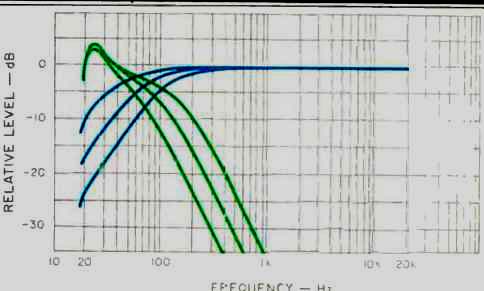
Fig. 1--Swept-frequency responses for low- and high-pass settings of 50, 80,
and 125 Hz, and 12-dB/octave slopes, with internal equalization set for use
with Sumo Samson subwoofer (see text).
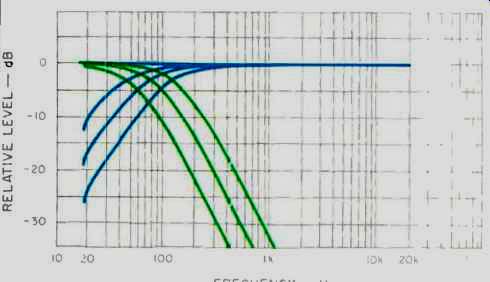
Fig. 2--Swept-frequency responses for filter settings of 50, 80, and 125 Hz,
and with crossover bypassed after switching equalization out.

Fig. 3--Swept responses at 63 and 100 Hz, with low-pass slope switched to 18
dB/octave. Additional sweeps (beginning top left) show effect of raising
low -frequency level by 5 and 10 dB.
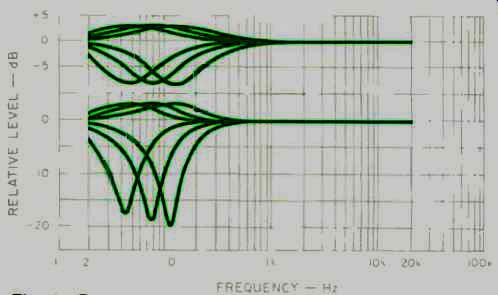
Fig. 4--Responses resulting from voltage addition of low- and highpass outputs.
Top group is with 12-dB/octave slope, bottom group with 18-dB/octave slope.
Figure 2 shows the responses after turning off the equalization and matching the low-and high-pass levels by switching the frequency back and forth and adjusting the low-pass level control. For clarity, plots were made only for the 50-, 80-, and 125-Hz settings and for the bypass. The filter slopes were accurate for 12 dB/octave, most obviously so with the low-pass responses. With the 125-Hz setting, the low-pass response (relative to 30 Hz) was +0.06 dB at 20 Hz, -1.0 dB at 2.6 Hz, and-3 dB at 1.5 Hz.
Figure 3 shows the response for the 63- and 100-Hz settings with the low-pass slope switched to 18 dB/octave.
Also shown is the effect of increasing the low-pass level in two 5-dB steps. The range of the control was from total attenuation to 11 dB above matched level. (The matched-level point was at about one o'clock. The control has no marker, so I put a little label on it to aid in my own evaluation.) Note that in both Figs. 2 and 3, the crossover points are very consistent in their displacement below zero. A check of this specific property showed that all of the points for all five crossover frequencies and the two slopes were 3 dB down (±0.3 dB) at the crossover frequency. This held true, provided both the high- and low-pass filters were set to the same slope. (That ±0.3 dB variation, incidentally, includes any error I might have made when matching levels.) The outputs from the Delilah can be combined in a number of ways. If the low-pass stereo outputs are selected, then you can use the same-polarity (" + ") or the reversed-polarity (" -") jacks to feed a stereo amplifier. In adding the outputs of the low- and high-pass sections by summing their voltages, we can get some indication of how the sound pressure waves from the subwoofer and main speakers would add acoustically. What is shown in Figs. 4 and 5 (discussed below) only applies, however, if the listener is equidistant from the acoustic centers of both speakers, so as to maintain this time/phase relationship. The relative phase in the crossover region changes in such a way that the reversed-polarity low-pass output adds positively to the high-pass output. The same-polarity output, however, causes a subtraction.
Figure 4 shows the summed responses for both low-pass slopes for 50-, 80-, and 125-Hz settings. With the shifted phase of the reversed-polarity output matching the shifted phase of the high-pass output at the crossover point, the responses actually increase to a maximum of +3.0 dB relative to reference level. Remember that the crossover points were at -3.0 dB and that there is a 6-dB increase with voltage addition of the same signal: -3.0 + 6.0 dB = +3.0 dB. For the low-pass same-polarity condition, the phases are close to 180° out at the crossover. There also is noticeable cancellation-about 8 dB with the 12 dB/octave slope and 17 dB or more with 18 dB/octave. These numbers demonstrate why it is so important to get polarity relationships correct when using a subwoofer. However, keep in mind that, for a particular pairing of an amplifier and subwoofer, including their location, the same-polarity connection might be the one to use.
If the sound powers from the subwoofer and the main speaker are considered to be adding, the total of the two powers at -3 dB results in flat power response. I thought of a test to prove that this was so: I fed one pink-noise source into the left input and another into the right. Then, I added the left low-pass output to the right high-pass output and fed the summation to a third-octave RTA. The response was flat throughout the crossover region, showing good results from power summing.
Figure 5 shows how it might or might not be possible to use the Delilah's controls to flatten voltage/pressure added responses. The uppermost group of curves shows the effect of shifting the 12-dB/octave low-pass crossover frequency down while leaving the high-pass setting at 125 Hz. Appreciable flattening takes place, and the overall response with a low-pass setting of 63 Hz is really quite good. The second set of curves, for the 18-dB/octave case, indicates less success. The third and fourth groups show that reducing the low-pass level for the 12- and 18-dB/octave slopes, respectively, is not a good idea for this purpose.
Harmonic distortion was very low in the high-pass output--just 0.002% in the left channel and 0.003% in the right channel over most of the range. At the highest frequencies, the distortion reached 0.003% and 0.004% for left and right channels, respectively. It was difficult to make any meaningful measurements of the low-pass output, but over this output's limited frequency range, noise and distortion was less than 0.015%.
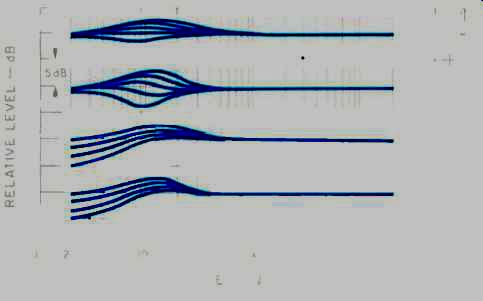
Fig. 5--Attempts to flatten responses by shifting low-pass frequency down
(top two groups) and by reducing low-frequency level (bottom two groups). Filter
slopes are 12 dB/ octave for the first and third groups, 18 dB/ octave for
the second and fourth.
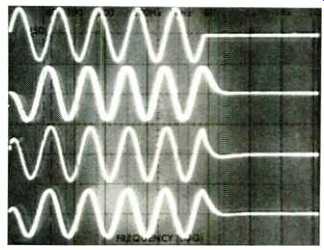
Fig. 6--Phase comparisons for 80-Hz, five-cycle tone burst. From top to bottom:
Test signal, low-pass output, high-pass output, and voltage-summed results.
Note the relatively small phase difference between the low- and high-pass outputs, and the good damping at the termination of the burst (see text).
Relative to 1 V, the noise was down 92 to 97 dBA, with -95 dBA typical for most control settings. The maximum input and output level was a very high 10.2 to 10.5 V at any frequency from 20 Hz to 20 kHz. The input impedance was 46 kilohms, and all of the output impedances were very low-close to 100 ohms (120 ohms was the highest figure obtained). These are all excellent results.
I set both sections of the Delilah to 80 Hz, with the lowpass gain set for matched level. Then, I fed in a five-cycle 80-Hz tone burst. Figure 6 shows (from top to bottom) the test signal, the low-pass output, the high-pass output, and the voltage-summed result. Oscilloscope gains were adjusted to facilitate making waveform comparisons. The broadening of the second and fourth traces is the result of storing the waveforms from tests with both 12- and 18-dB/octave slopes and the fact that there was a difference in phase shift for the two slopes. The phase difference between the low - and high-pass outputs is relatively small, so these two waveforms are lined up quite closely, as is the summed signal. These waveforms are really quite good, and the low - and high-pass signals remaining at the termination of the burst are quickly and smoothly damped.
Use and Listening Tests
The owner's manual has the feel of a personal communication, with its stapled pages and typewritten (but well reproduced) text. There are very good comments on the requirements for associated amplifiers and how they might be used. No illustrations or connection diagrams are included, but the text is explicit on which jacks to use and why.
Sumo makes the important point that, for each configuration, the polarity needed cannot be proven when making the initial hookup. The manufacturer also provides good guidance on selecting crossover frequencies and does a fine job of explaining how a reduction of the low-pass frequency setting can reduce unwanted bass heaviness. Sumo's position appears to be that the sound from the main speakers and the subwoofer will add on a power basis, in which case exact subwoofer location would not be as important as it would be if the goal was to have the two sound waves add and be in phase. A comment or two on subwoofer placement, however, would have been in order.
The Delilah was tried with a Triad Design HSW-300 subwoofer, which has a built-in stereo amp. I found a combination that seemed best to me: High-pass and low-pass frequencies at 80 and 63 Hz, respectively, and the reversed -polarity left and right outputs. It was quite easy to adjust the low-pass gain for good balance, but I did change the setting occasionally for better results with particular music.
Electronically, the Sumo crossover is impeccable: it has low distortion and noise and very flat response outside the crossover region. With the many choices for crossover frequencies and low-pass output connections the Delilah offers, it can be a problem-solver for many audiophiles who are adding subwoofers. The price is a bit on the high side, perhaps, but the Delilah is of the highest quality--in all respects.
-Howard A. Roberson
(Source: Audio magazine, Aug. 1988)
Also see:
Sumo Model Nine Amplifier (Dec. 1983)
Sumo Athena Preamp (Aug. 1989)
= = = =